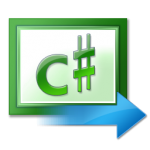I previously blogged about the repository pattern and .NET implementations. Here are the links to those old posts: The Repository Pattern The Repository Pattern – Part 2 Since that time, I have zeroed in on a fairly
data access Archive

Testing Your CRUD Using Generics
I often use a generic repository pattern as a wrapper around my data access logic. This wrapper generally serves the purpose of encapsulating specific implementation details. Here are the repository interfaces that I current use: public interface

Best Practices for using LINQ in your Data Access Layer
This post will try to expose some of the issues that commonly arise when you choose to use LINQ to SQL or LINQ to Entity in your application. First a little background. LINQ General By now most

Photo Gallery – Data Access / Business Logic
There are lot’s of good reasons to separate applications into layers. One of the best reasons is to allow the application to easily be extended and maintained. Even in this small project, separation is a good. The
